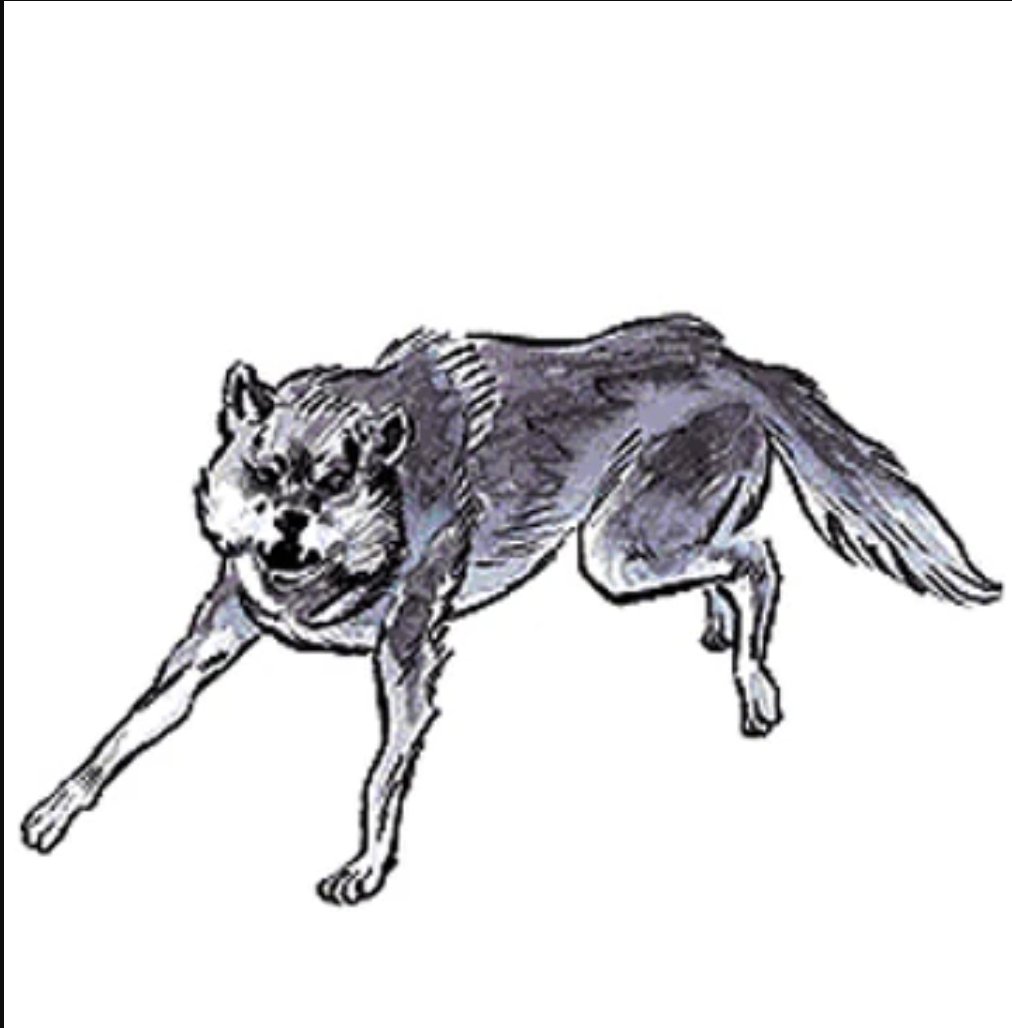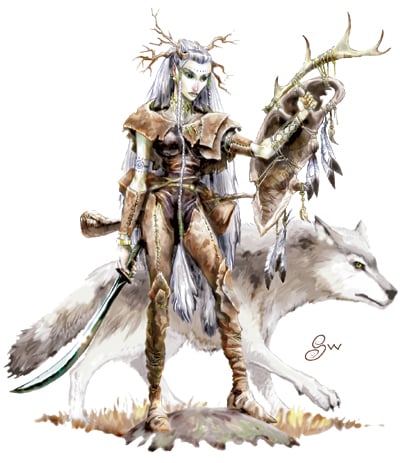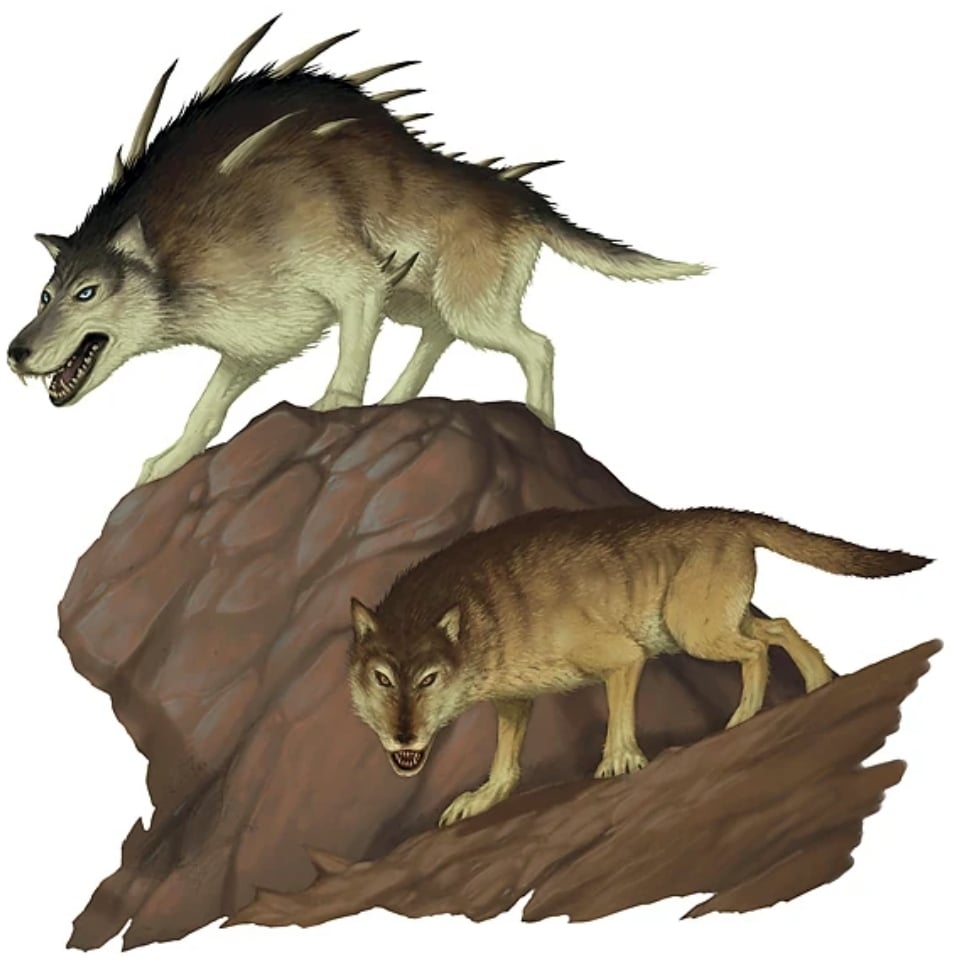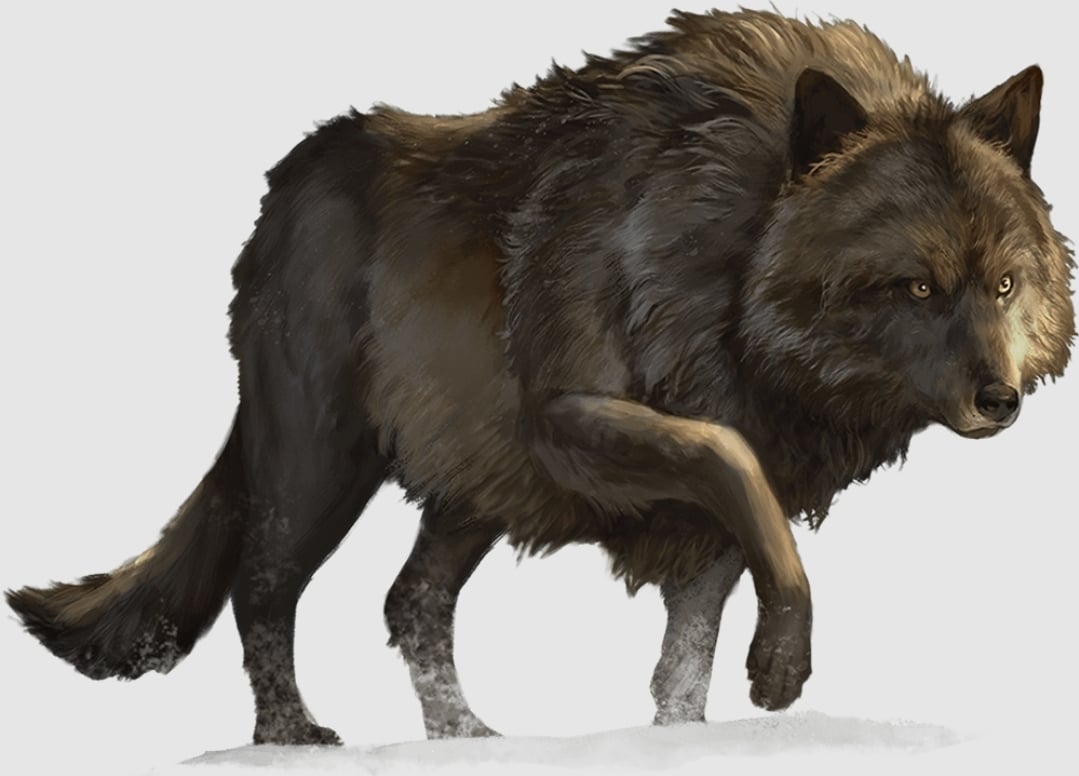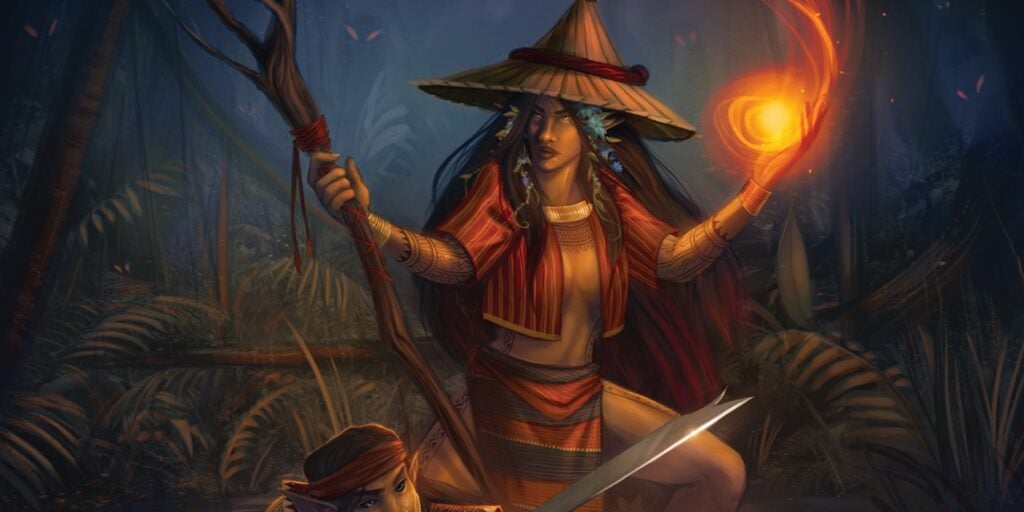Turns Out Dire Wolves Aren’t Just A D&D Monster Any More
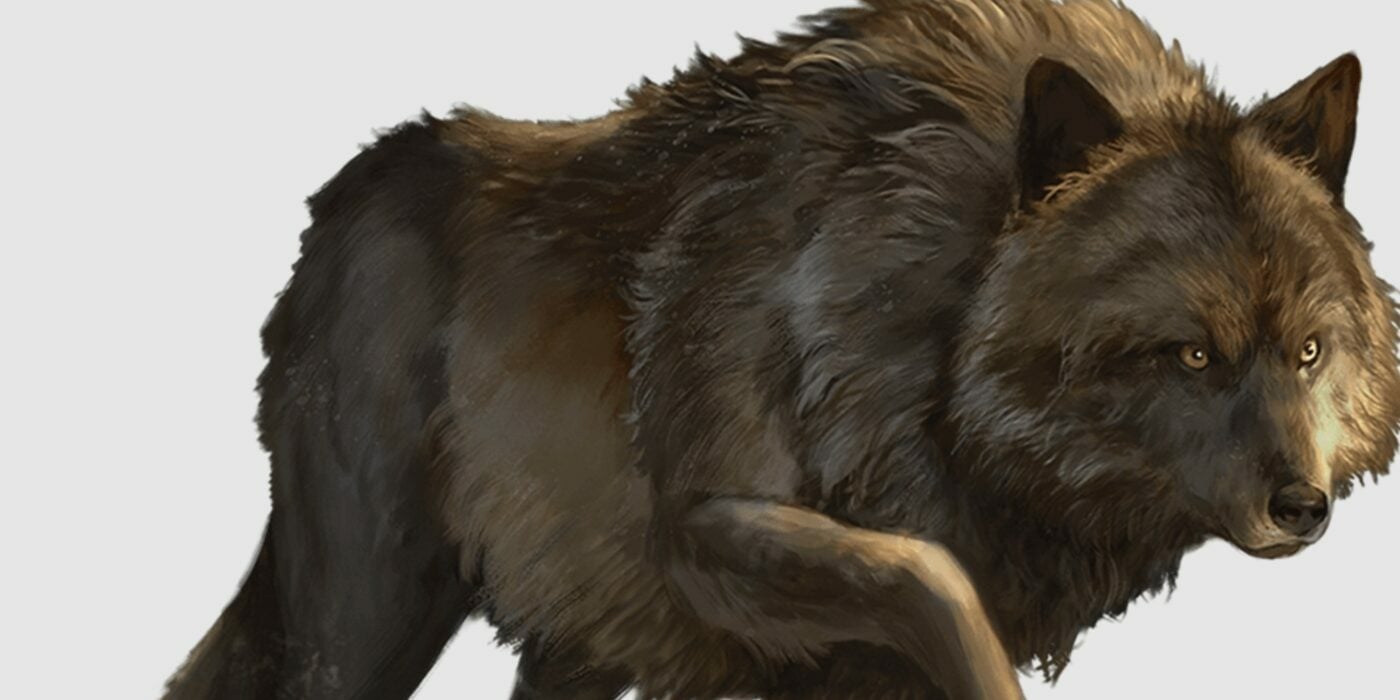
Dire Wolves, best known for killing 3rd-level parties in random encounters, have been brought back from extinction. What could go wrong?
Jurassic Park came out 32 years ago as a cautionary tale about what happens if you let science be all about whether or not you could without stopping to think whether or not you should. Or maybe it was a lesson about the commercialization of miracles. Or how cutting corners is never good. Either way, it seems that three decades is all it takes for people to forget the lessons that Sam Neil, Laura Dern, and Jeff Goldblum learned the hard way. Because apparently now science has brought back a creature you might know best from the pages of the Monster Manual: the dire wolf.
Dire wolves, the terror of low-level random encounter charts, are back—in real life. They aren’t, as far as I can tell, on the real world’s random encounter charts; those are still just mostly “someone who you’ve met six times and remembers your name and hobbies but you know nothing about them” and, if you’re in Florida, “gators”.
But Colossal Biosciences, a company with a name that would get rejected from a writers’ room for being too on-the-nose, has extracted dire wolf DNA and made edits to existing wolves. Whether or not that’s actually a dire wolf, or how these “de-extinction” efforts coincide with ongoing efforts to conserve the wolves we have, or the morality of this kind of science are all questions for a website that isn’t about tabletop games. What we’re going to do instead is look at a brief history of dire wolves in D&D. So buckle in and get your Monster Manuals ready.
First Edition – Big Wolves, Sometimes Evil
Dire wolves have been part of D&D since before 1st Edition. Though if you wanted to find them in the Monster Manual, you had to go looing under Wolf, Dire. Back then, both Dire Wolves and Worgs were basically the same monster, with some slight differences. Dire wolves were “huge specimens typical of the Pleistocene Epoch”, obviously. While their evil-natured counterparts, called neo-dire wolves or worgs (not to be confused with Tolkien’s wargs) which often worked with goblins “to simply enjoy killing.”
Both varieties were pretty nasty to run into. Especially because the bigger ones always appeared in the greatest number. You’d always run into them in packs, never less than 3 (usually much more). Their numbers and size made them deadly. But they didn’t have many bells and whistles otherwise. Which is fine. Neither did D&D at the time.
Second Edition – Dire Wolves Get Bigger
2nd Edition D&D was one of the easiest edition transitions because most of the monster stats remained the same—they just got more to flesh them out in terms of lore and habits. Which makes the monsters more monstrous in some cases, and humanizes them in others.
Like in the 2nd Edition Habitat and Ecology entires, that talk about how wolves are valuable hunters and they’re social animals that love to live, hunt, and play together in families. Or how fear of the wolf has led to them being driven to extinction in some parts of the world. Which is enough to make you feel kind of sad, and like, yeah maybe they do deserve to be brought back from gene-edited wolf stock. Especially since Dire Wolve and Worgs are now distinct monster entries.
Just as long as you dn’t encounter 3d4 of them, because each Dire Wolf has 4 + 4 hit dice and deals 2d4 damage with their attacks, which is enough to take out many a low level character in a single pack attack. They also get artwork for the first time in D&D. It’s exactly what you’d expect.
Third Edition – A Knock Down Drag Out Dire Wolf Fight
3rd and 3.5 Edition D&D made the dire wolf a lot more dangerous. Because this was the edition that solidified things like knocking your enemies down. And gaining bonuses for flanking your enemies. Wouldn’t you know it, these dire wolves do both.
As part of a regular attack, dire wolves can also make a trip attack. Meaning every time you get bitten by one, not only do you take 1d8+10 points of damage, you also get knocked to the ground which makes it even easier for the other dire wolves in the pack to hit you. Especially since they’re going to flank you at every chance they get.
No wonder this is the edition that gave dire wolves the fearsome reputation of “surprisingly lethal entry on the random encounter table”. Running into a pack of them meant your party needed teamwork.
Fourth Edition – Dire Means Spikes
In 4th Edition D&D, dire wolves got a bunch of bony spikes in the art. Also, they became even deadlier at biting targets they knocked down. They went from making trip attacks as part of their regular attack routine, to automatically knoccking targets prone if one or more of the dire wolf’s allies was adjacent to their target. On top of that, they deal double damage against prone targets.
Bone spikes aside, these dire wolves represent a low-level menace. But also signify the potential of gene-edits. Why not make the newly returned dire wolves also have tougher bones. I know that’s not how that science works—yet. But if anyone was going to make a big armored wolf, it’s a company with a name like Colossal Biosciences.
Fifth Edition – Pack Tactics
The 5th Edition Dire Wolf is probably the one you know. And it’s probably what most people think of when they think Dire Wolf. It’s streamlined. Iconic. Does all the things you’d expect.
These wolves are excellent trackers. They have advantage on perception checks that rely on hearing or smell. Whenever they have a friend within 5 feet of their target, they gain advantage on attacks. They lose a little deadliness, because they no longer automatically knock you down. But that’s all soon to change.
5.5E Dire Wolf
In 5.5E, on the other hand, dire wolves just automatically knock you down if they hit. No save, no separate attack—it’s just as they were in 4th Edition. This is because 5.5E secretly uses the underpinnings of 4th Edition. Kind of like how the new dire wolves use the genetic underpinnings of regular wolves.
And just like with regular wolves, the 5th Edition ones are much less of an existential threat to low level parties. They went from being CR 3 potential party-killers (and later CR 5) to CR 1 creatures. Meaning you not only are expected to encounter them earlier, but they’re less dangerous. Maybe more friend-shaped.
But whether you’re bringing back dire wolves for your taletop adventures, or whether you’re an actual scientist who’s just opening up the genetic code and doing some tinkering, one thing is clear. They may be dire, they may be wolves, but they will one hundred percent make amazing combat mounts if you max out your animal handling or have a chill DM.
Also, maybe keep an eye on “Colossal Biosciences” because if anyone was gonna start making armored wolf mounts, it’s a company with a name like that. I’ve played Resident Evil. I know how this goes.
Dire wolves—turns out, not so dire!


